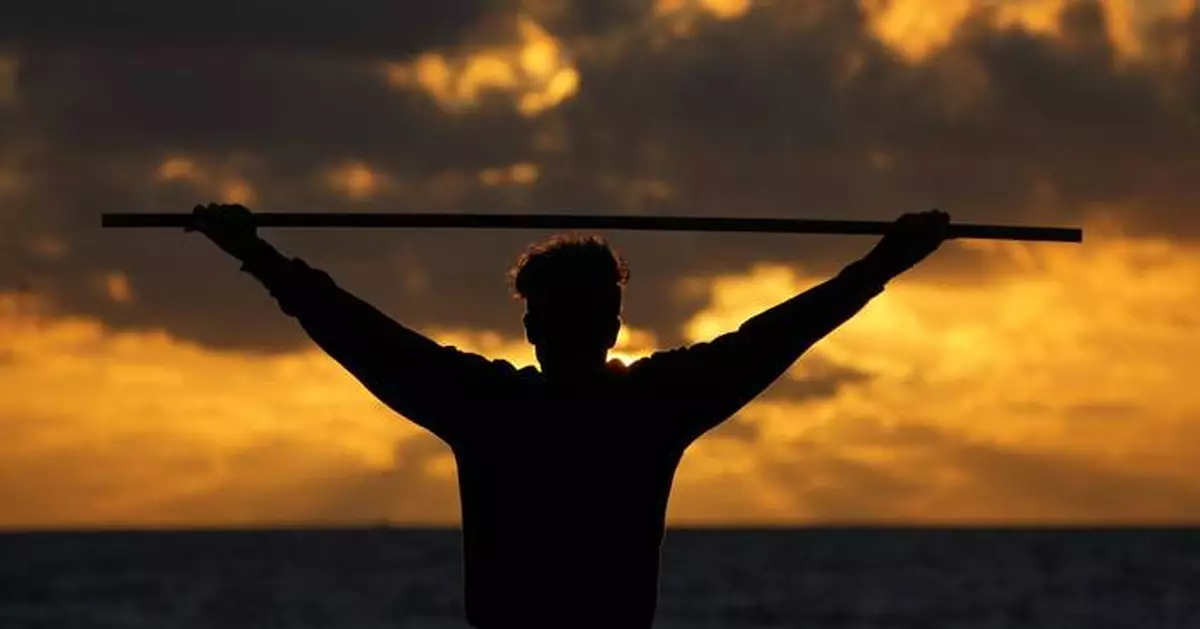The majority of strokes could be prevented, according to new guidelines aimed at helping people and their doctors do just that.
Stroke was the fourth leading cause of death in the U.S. in 2023, according to the Centers for Disease Control and Prevention, and more than half a million Americans have a stroke every year. But up to 80% of strokes may be preventable with better nutrition, exercise and identification of risk factors.
The first new guidelines on stroke prevention in 10 years from the American Stroke Association, a division of the American Heart Association, include recommendations for people and doctors that reflect a better understanding of who gets strokes and why, along with new drugs that can help reduce risk.
The good news is that the best way to reduce your risk for stroke is also the best way to reduce your risk for a whole host of health problems — eat a healthy diet, move your body and don't smoke. The bad news is that it's not always so easy to sustain.
Dr. Sean Duke, a stroke doctor at the University of Mississippi Medical Center, blames the forces in society that keep people sedentary and eating poorly, like cell phones and cheap, unhealthy food. “Our world is stacked against us,” he said.
Here's what to know about stroke and the new guidelines:
A stroke happens when blood flow to part of the brain is blocked or if a blood vessel in the brain bursts. That deprives the brain of oxygen which can cause brain damage that can lead to difficulty thinking, talking and walking, or even death.
Eating healthy can help control several factors that increase your risk for stroke, including high cholesterol, high blood sugar, and obesity, according to the heart association.
The group recommends foods in the so-called Mediterranean diet such as fruits, vegetables, whole grains and olive oil, which can help keep cholesterol levels down. It suggests limiting red meat and other sources of saturated fat. Instead, get your protein from beans, nuts, poultry, fish and seafood.
Limit highly processed foods and foods and drinks with a lot of added sugar. This can also reduce your calorie intake, which helps keep weight in check.
Getting up and walking around for at least 10 minutes a day can “drastically” reduce your risk, said Dr. Cheryl Bushnell, a neurologist at Wake Forest University School of Medicine who was part of the group that came up with the new guidelines. Among the many benefits: Regular exercise can help reduce blood pressure, a major risk factor for stroke.
Of course, more is better: The heart association recommends at least 150 minutes of moderate aerobic or 75 minutes of vigorous activity — or some combination — per week. How you do it doesn't matter so much, experts said: Go to the gym, take a walk or run in your neighborhood or use treadmills or stepper machines at home.
Diet and exercise can help control weight, another important risk factor for strokes. But a new class of drugs that can drastically reduce weight have been approved by regulators, providing new tools to reduce stroke risk since guidelines were last updated.
The guidelines now recommend that doctors consider prescribing these drugs, including those sold under the brand names Ozempic, Wegovy, Mounjaro and Zepbound, to people with obesity or diabetes.
But while those drugs can help, people still need to eat well and get exercise, cautions Dr. Fadi Nahab, a stroke expert at Emory University Hospital.
The new guidelines for the first time recommend doctors screen patients for other factors that could increase stroke risk, including sex and gender and non-medical factors such as economic stability, access to health care, discrimination and racism. For example, the risk for having a first stroke is nearly twice as high for Black adults in the U.S. as it is for white adults, according to the CDC.
“If somebody doesn’t have insurance or they can’t get to a doctor’s office because of transportation issues or they can’t get off work to get health care ... these are all things that can impact the ability to prevent stroke," Bushnell said.
Doctors may be able to point to resources for low-cost health care or food, and can give ideas about how to be active without breaking the bank for a gym membership.
The guidelines also now recommend doctors should screen for conditions that could increase a woman's risk for stroke, such as high blood pressure during pregnancy or early menopause.
Three of the most common stroke symptoms include face weakness, arm weakness and difficulty speaking. And time is important, because brain damage can happen quickly and damage can be limited if a stroke is treated quickly. Stroke experts have coined an acronym to help you remember: FAST. F for face, A for arm, S for speech, and T for time. If you think you or a loved one could be having a stroke, call 911 right away.
AP data journalist Kasturi Pananjady contributed to this story.
The Associated Press Health and Science Department receives support from the Robert Wood Johnson Foundation. The AP is solely responsible for all content.

FILE - A beach goer exercises as the sun rises above the Atlantic Ocean, Feb. 1, 2023, in Surfside, Fla. (AP Photo/Wilfredo Lee, File)













